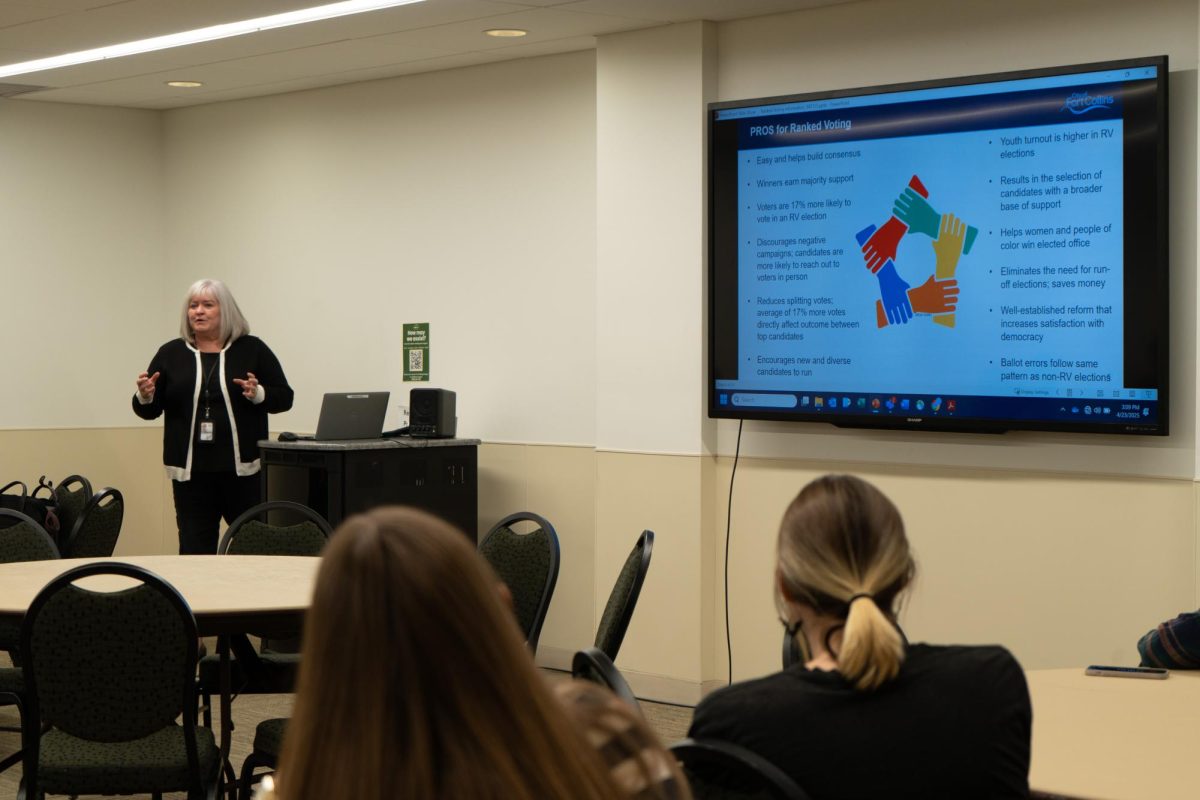The Ecological Response Model, which was recently released to the public, will be used as a tool to help balance community needs and the ecological needs of the Poudre River.
There was a panel presentation on the ERM in the Lory Student Center Thursday. The panelists answered questions and engaged in discussion about what the ERM is, why it was developed and the implications of the results of the project.
The panelists included Kevin Bestgen, Brian Bledsoe, Boris Kondratieff and LeRoy Poff who are professors at Colorado State University, David Merritt from the U.S. Forest Service and staff from the City of Fort Collins Natural Areas Department.
A comprehensive ecological response model was created by scientists from Colorado State University of different disciplines, the U.S. Forest Service and other community organizations in 2011.
The goal of the ERM is to identify probable ecological responses to existing conditions of the river as well as potential future conditions that may arise from different types of water use.
“The Poudre River is an important resource to the Fort Collins community in many ways,” said Dan Baker, a research scientist and professor of civil and environmental engineering at CSU. “It delivers our drinking water, it carries off our storm water, it maintains animal and plant habitats, it provides recreation and aesthetics.”
According to Baker, this is the first time a comprehensive ecological model has been developed for the Poudre River to study all the different interactions between each ecological component. He said he hopes the model will be used to inform future management decisions regarding the river.
David Merritt, a riparian plant ecologist working for the U.S. Forest Service, plotted information on vegetation and species of the riparian forests along the Poudre River on a detailed topographic map. Using flow records of historic and current river patterns, he and colleagues were able to construct visual predictions that show the presence, or absence, of a particular species in relation to water flow.
“The purpose of the ERM is not to restrict water use, but rather utilize the data it provides to use our water resources more wisely,” Merritt said.
CSU biology professor Leroy Poff worked with colleague Bestgen to investigate Poudre river fish populations and colleague Kondratieff to examine Poudre river aquatic entomology.
“The Poudre River is an interesting river because it is not a mountain or a plains river but is a transition between the two and because of this it has been heavily impacted by all the growth on the Front Range in the past 20 years,” Poff said.
Poff and his colleagues discovered the population size of brown trout in the Poudre is highly sensitive to water levels in the river, especially during the winter. The higher the water flow in the winter, the better the river can maintain the trout population, according to Poff.
“The way the river currently operates there are these big fluctuations in height because of irrigation take offs,” Poff said. “With information like this, people need to ask themselves ‘is it worth giving the river what it needs in sacrifice of some of our own needs?’”
The panel Thursday discussed the different ERM test scenarios that include both stable base flows and rejuvenating high flows, and what these scenarios indicate for future improvements in the river ecosystem.
“In a general sense, the problems facing the river are not unique,” Poff said. “They are happening across the country and world as human populations and society demands more and more of these ecosystems. If we want to have a sustainable future we need to start understanding the consequences of our actions on the ecosystems we want to protect and learn how to manage these trade-offs.”
A detailed report and executive summary on the ERM can be found the Fort Collins Community website.
Collegian Reporter Madison Brandt can be reached at news@collegian.com and on Twitter @Mademia_93




